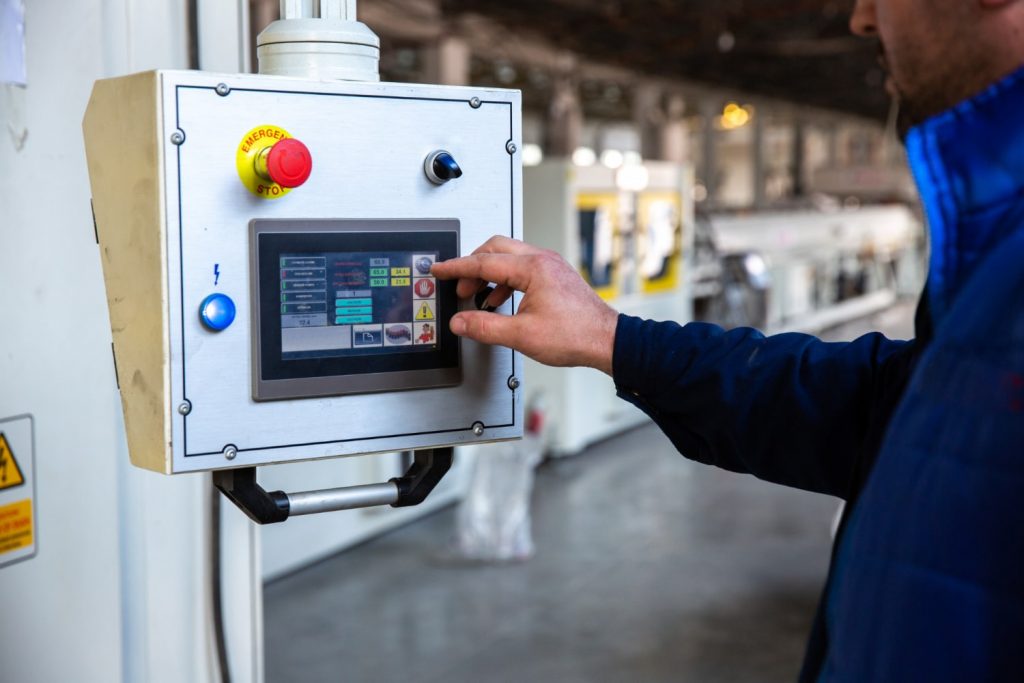What Does It Take to Retrofit Automation into a Warehouse?

In recent years, the demand for warehouse spaces has grown exponentially. This demand is fueled by the rapid growth of eCommerce in the global retail space. According to CBRE, the U.S.-based eCommerce market will represent 26% of all retail sales in 2025. The rapid growth of eCommerce has also translated into an addition of around 330 million square feet of warehousing space in the U.S.
Thanks to rising consumer expectations and the post-pandemic “return to normalcy,” existing warehouses are running at full capacity. Many retailers are considering moving their operations to a new warehouse with a larger operational capacity. However, this decision can often be costly and time-consuming.
Retrofitting an existing warehouse for higher operational capacity is a feasible solution. Besides, retrofitting with automation can help retailers increase their warehouse space and productivity in a shorter duration.
What does it take to retrofit automation in an existing warehouse? Let’s discuss.
5 Benefits of a Warehouse Retrofit
In a dynamic and changing retail market, new warehouses may likely become insufficient or outdated soon. Similarly, new warehouse technology will become outdated in a few years and be unable to cope with changing market requirements.
In the interests of speed, agility, and responsiveness, warehouse modernization isn’t supposed to change its basic structure – in terms of its layout, storage systems, and conveyor systems. However, a modernized warehouse can help transform the:
- Individual components
- Business processes
- Overall performance
Here are some of the benefits of a warehouse retrofit:
- Cost savings
Retrofitting involves lower planning and implementation costs – when compared to a new warehouse or construction. Besides the construction costs, a new facility is time-consuming when it comes to streamlining its operations. This, in turn, can add to the company’s operational (or running) costs.
Rising labor costs also present a challenge for eCommerce retailers. Depending on their size and location, new warehouses can incur higher employment and training costs for new workers. Besides these costs, retailers have to manage a host of other cost factors including:
- Higher rents
- Equipment costs and their maintenance
- Order fulfillment costs
- Warehouse insurance and taxes
- Sustainability
Industrial facilities including warehouses are a major contributor to carbon emissions and energy consumption. Through retrofitting, retailers now have an opportunity to optimize their energy consumption and emissions. By reusing the existing space and construction materials, they can reduce both costs and emissions, thereby improving their carbon footprint.
Overall, retrofitting can enable sustainable technology solutions in the form of:
- Energy-efficient systems including advanced HVAC and smart lighting.
- Integration of renewable energy sources like solar panels and geothermal systems.
- Smart building technologies such as IoT sensors, building automation, and data analytics
- Environmental-friendly materials such as green roofs and water conservation systems.
- Improved speed-to-market
In the face of rising product demands, companies need to improve their speed-to-market to deliver products to consumers. Retrofitting an existing facility can improve speed-to-market by expediting production-related processes.
Warehouse modernization through retrofitting can also be applied to specific warehouse operations – such as goods storage and order picking. For instance, retrofitting can optimize operational processes such as tracking goods movement and cross-docking.
In other words, retrofitting can modernize specific warehouse facilities, components, and processes for optimal productivity. This helps boost operational efficiency and speed-to-market – as compared to investing in a new warehouse facility.
- Space optimization
To reduce the costs of automation, retrofitting architects must consider the space constraints of an existing warehouse facility. They need to think more innovatively when designing the modernized warehouse. As an example, a retrofitted warehouse used for materials handling can address the space constraint problem by utilizing any available production space for an overhead conveyor system.
Additionally, depending on their available space, retailers can choose flexible enclosure systems that can be scaled according to current demand. Other systems are available in a variety of dimensions for limited production-related applications.
- Improved efficiency
Retailers can also leverage retrofitting across facilities with manual operations. For instance, they can retrofit existing facilities with industrial robots for efficient material handling. This helps them optimize the material flow and improve efficiency – without “uprooting” their existing business workflow.
Labor shortage is a common reason why retailers look to relocate to a new facility. By implementing a retrofit with automation, they can overcome this problem through automation solutions. Additionally, automation can improve operational efficiency by taking over repetitive operations previously performed by human workers.
The Carte+ Advantage for Retrofit Automation
According to Peerless Research, over 40% of warehouses continue to rely on manual processes for order fulfillment. That said, there’s a growing industry shift towards warehouse automation.
With automated order fulfillment solutions like Carte+, retailers are maximizing their warehouse productivity. With Robotic Goods-to-Person (GTP) technology, Carte+ can navigate and optimize existing warehouse spaces, while saving both time and energy.
Here are some of our Carte+ advantages for your retail business:
- Retrofitting existing facilities into highly efficient MFCs.
- Optimizing the existing warehouse layout for improved order picking.
- Easy and faster installation of new shelves and automation systems.
- Seamless integration with existing enterprise systems like warehouse management.
Conclusion
As eCommerce continues to gain acceptance, there’s a growing demand for larger sophisticated warehouse facilities to optimize order fulfillment. Through automation solutions, retrofitting offers a feasible cost-effective option for retailers to upgrade their existing facilities, instead of investing into new setups.
As an eCommerce solution provider, Cartesian Kinetics is facilitating the use of automation to solve business challenges in the retail industry. Our automation tool, Carte+ offers the flexibility necessary for retailers to adapt to changing market demands. Here are some of its advantages:
- Faster installation in less than 6 weeks
- ROI in less than 2 years
- Optimum space utilization
- High throughput of over 450 totes per hour
Experience the future of order fulfillment today. Reach out to us!

